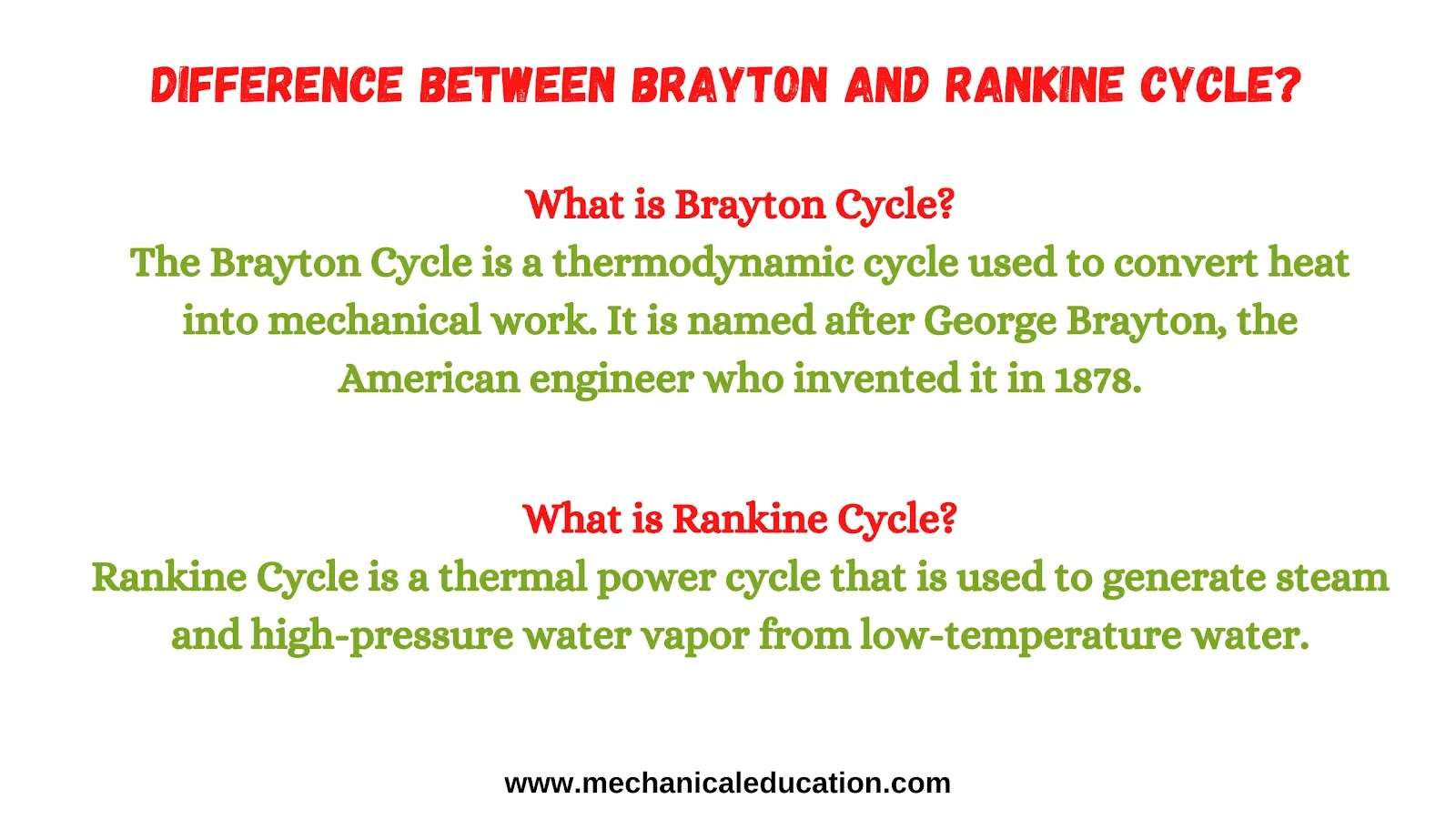Difference between Brayton and Rankine cycle?
What is Brayton Cycle?
The Brayton Cycle is a thermodynamic cycle used to convert heat into mechanical work. It is named after George Brayton, the American engineer who invented it in 1878.
The process can be used to turn a turbine engine or other device that uses heat energy into useful work.
What is Rankine Cycle?
Rankine Cycle is a thermal power cycle that is used to generate steam and high-pressure water vapor from low-temperature water.
The Rankine Cycle can be run in either open or closed circuits, with the former being more common for industrial applications. In this process, heat transfer fluid (HTF) is heated by burning fuel to produce high-pressure steam and then cooled by expansion into a condenser.
A condenser will be needed when running the Rankine Cycle in an open circuit; otherwise, it would create so much pressure that the system would implode due to its own weight.
The difference between Brayton and Rankine cycles is that the Brayton cycle operates entirely on gases that are fed into it, while the Rankine cycle uses a liquid as one of its working fluids.
The Brayton cycle is a gas turbine cycle, while the Rankine cycle is a steam turbine cycle.
In a Brayton cycle, the working fluid is always a gas, whereas, in a Rankine cycle, the working fluid can be either liquid or vapor.
In a Brayton cycle, the compressor and turbine are both located in the same chamber, while in a Rankine cycle they are separated by a heat exchanger.
A Brayton cycle is typically used for power generation (such as in piston engines), while a Rankine cycle is more commonly used for heating or cooling applications.
The Brayton cycle is the thermodynamic cycle used in gas turbine engines. The Rankine cycle is the thermodynamic cycle used in steam turbines.
The Brayton cycle (gas turbine cycle) is the simplest thermodynamic cycle and is used in jet engines. In this cycle, the air is compressed, heated by a fuel burner, then expanded through a turbine to produce work that powers the compressor.
The Rankine cycle (steam turbine cycle) is a more efficient variant of the Brayton Cycle and is used in most electric power generation plants. In this cycle, water is heated to form steam, which expands through a turbine to produce work that powers an electric generator.
The Brayton cycle is more efficient than the Rankine cycle, but the Rankine cycle can generate more power because it uses water as its working fluid.
The Brayton cycle is a thermodynamic cycle in which a gas or vapor is compressed, heated, and then expanded.
The Rankine cycle is a thermodynamic cycle in which a liquid is compressed, heated, and then expanded.
Either Rankine or Brayton can be used for hydropower production with turbines instead of fans turning shafts with harnessed waterpower for making electricity.
The Brayton Cycle is a thermodynamic process that uses a gas as the working fluid. The gas undergoes combustion in a constant-pressure heat engine, and the power stroke produces work to turn the compressor.
In the Rankine cycle, water is used as both the working fluid and cooling agent. The water is heated by burning fuel in a boiler, expands through a turbine to produce power, and then is cooled by being passed through a condenser.
In the Brayton cycle, the air is compressed and heated by the burning of fuel in a combustion chamber. The hot air then passes through a turbine, which drives the compressor and powers the machine. In the Rankine cycle, water is boiled and turned into steam, which then drives a turbine.



